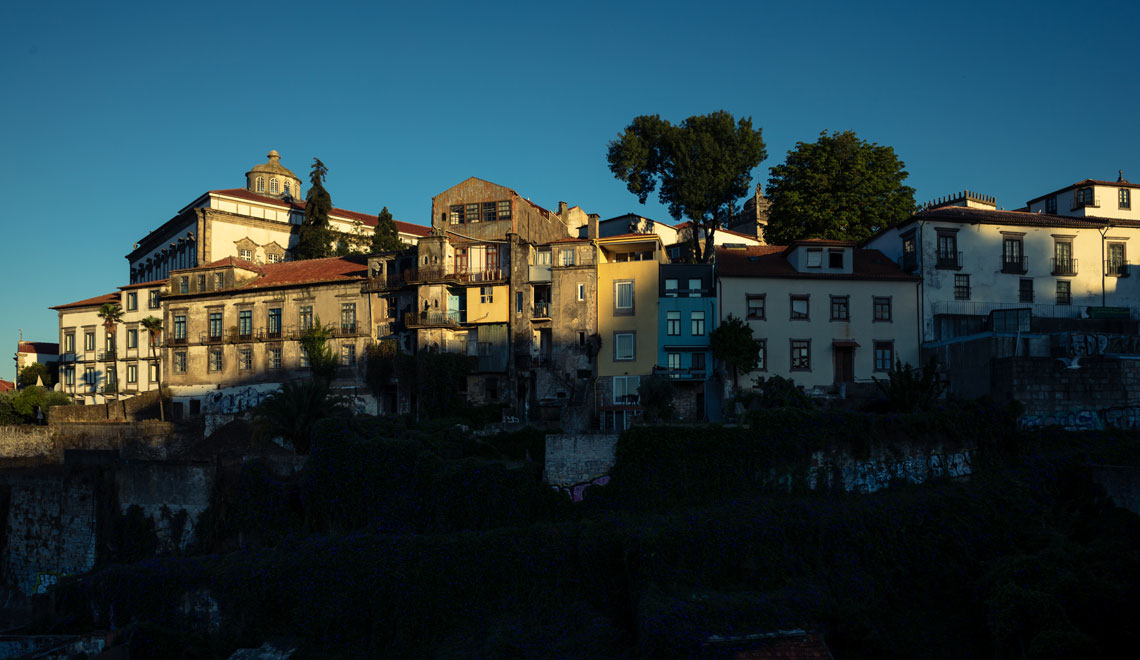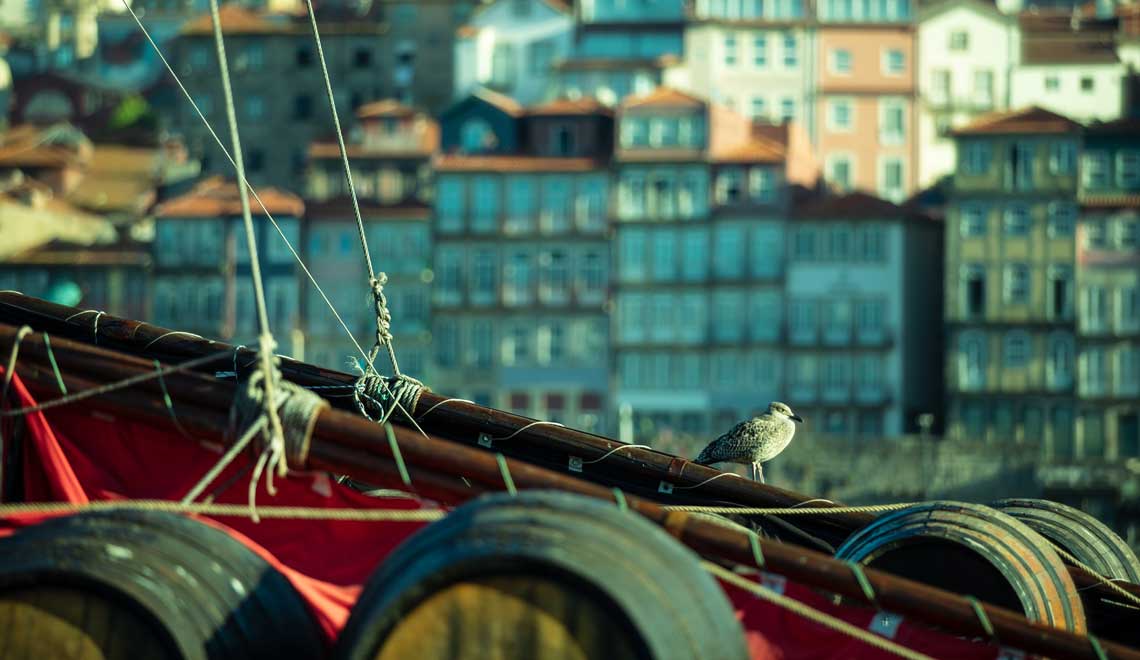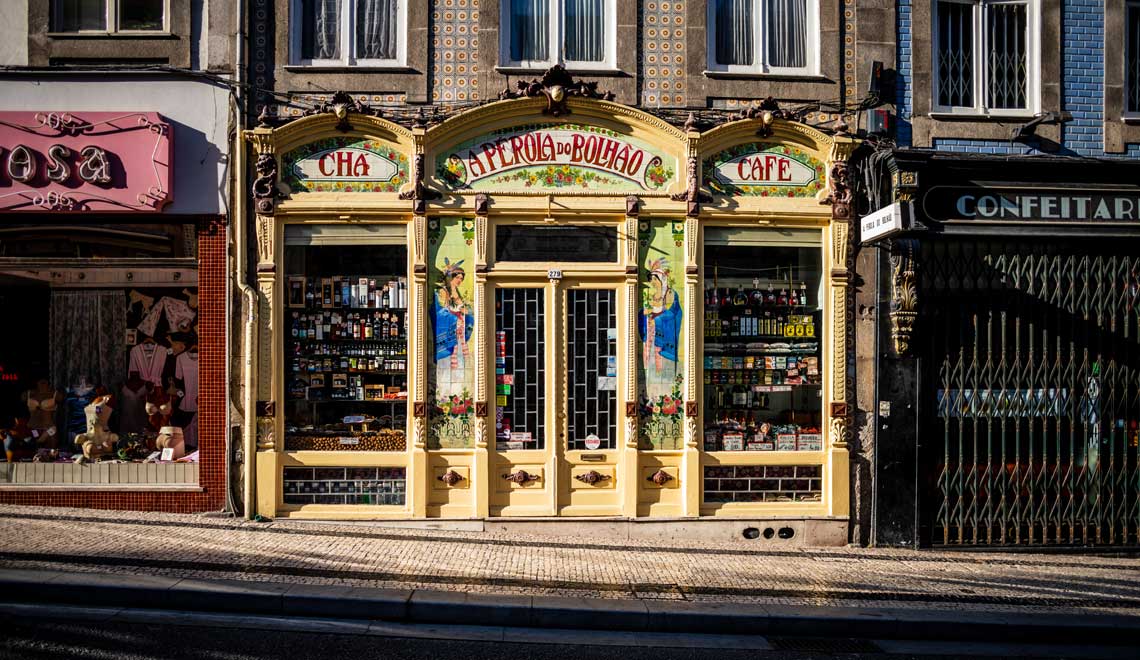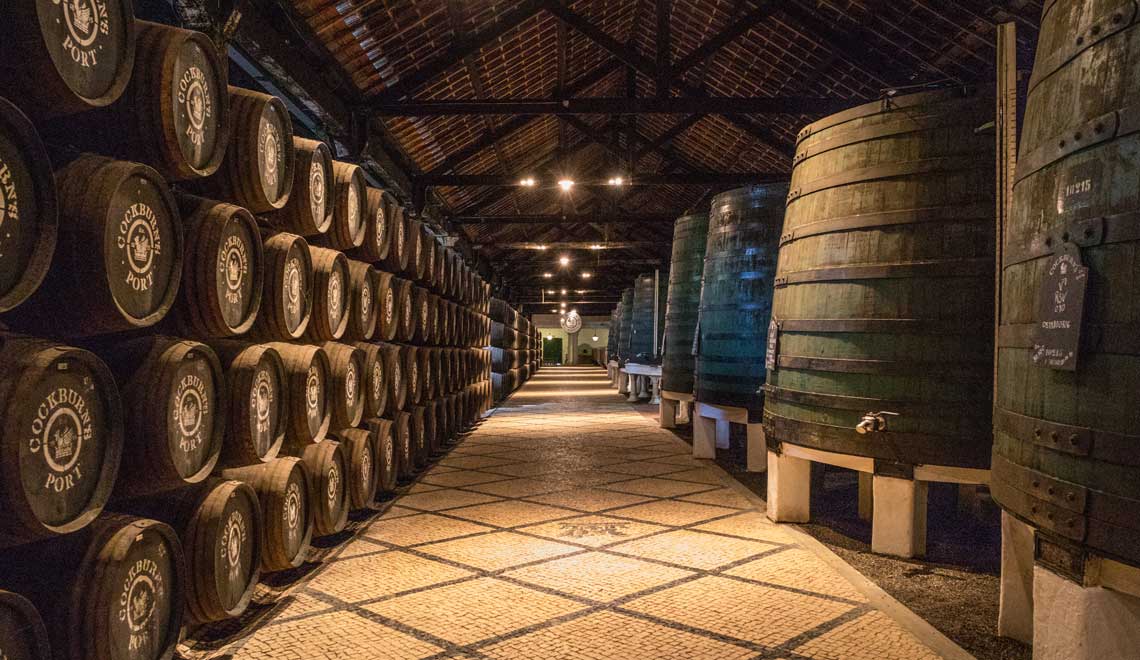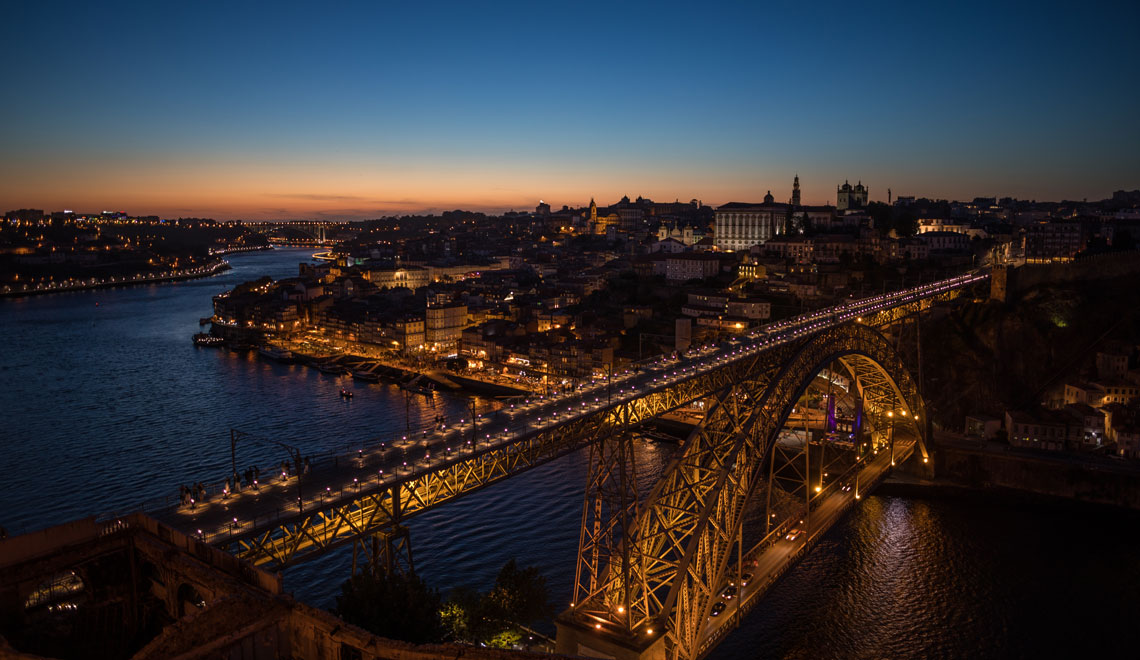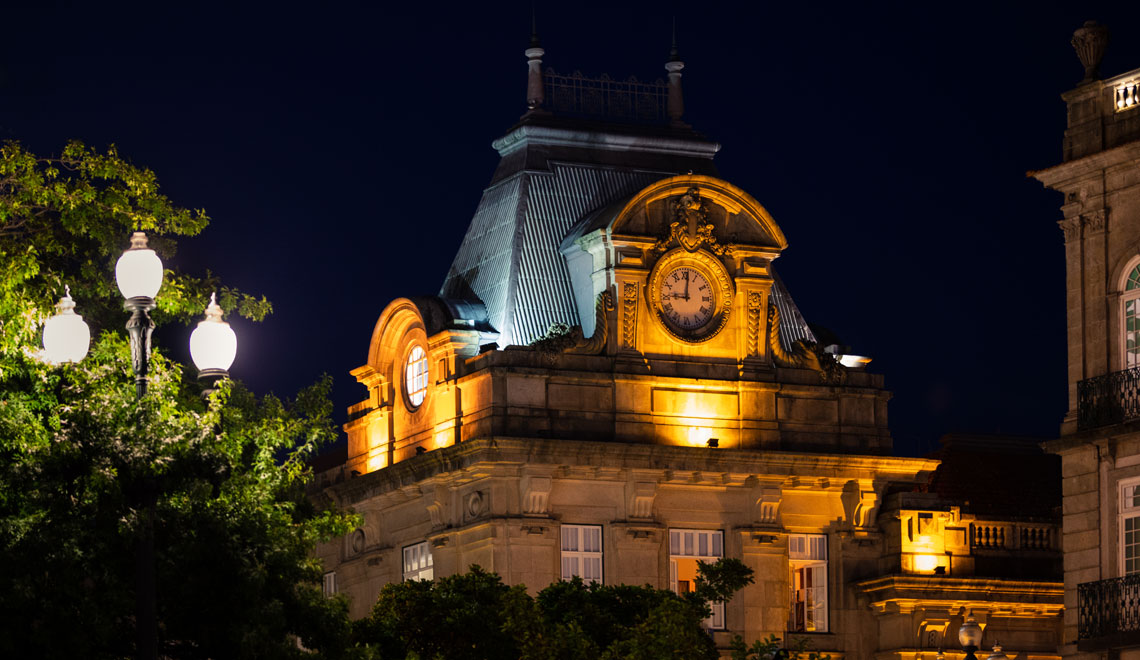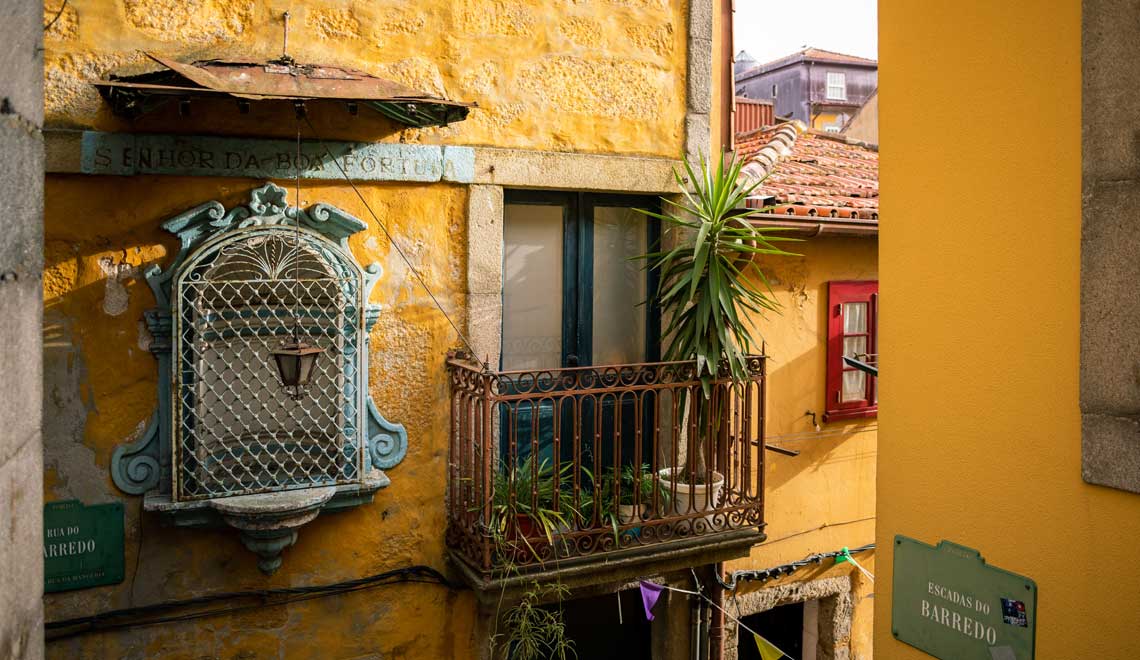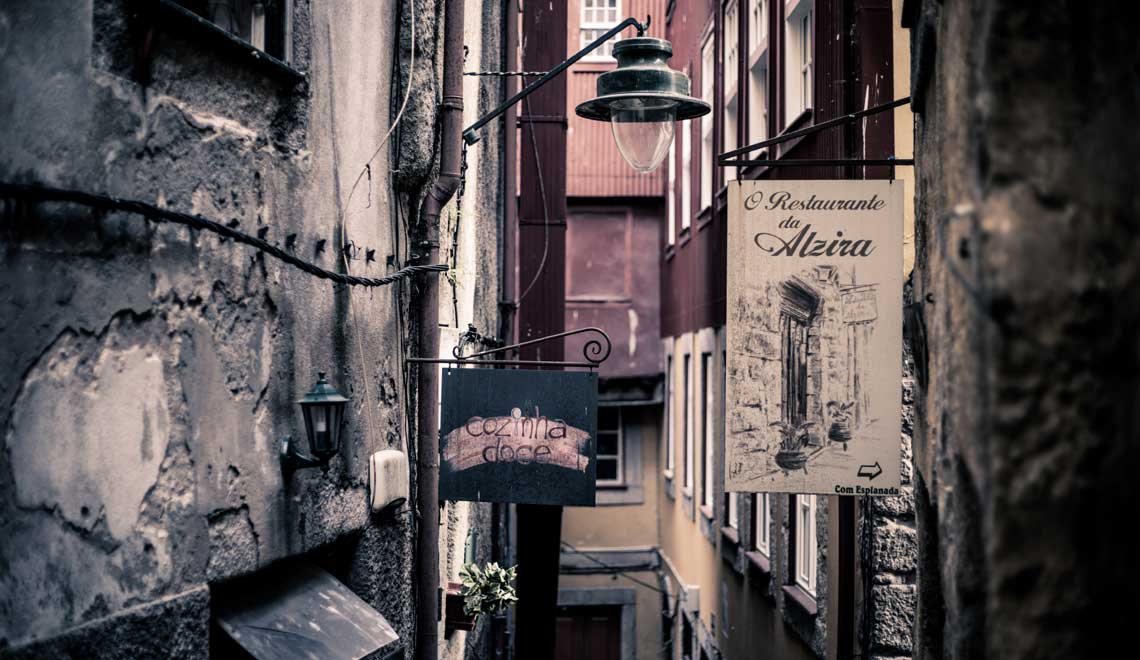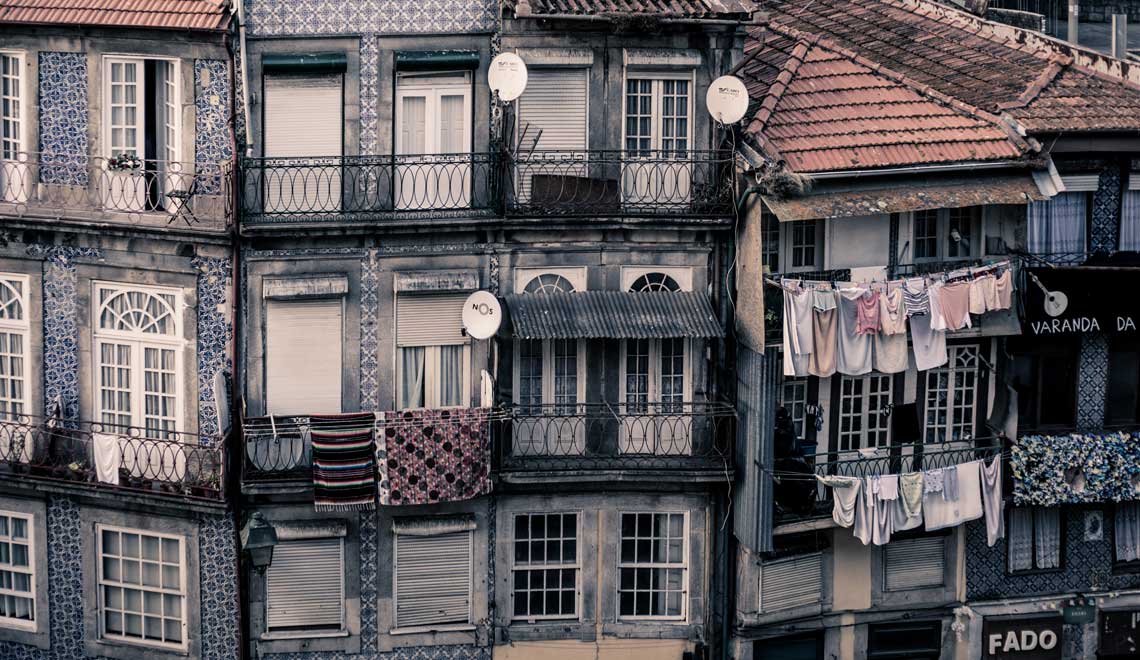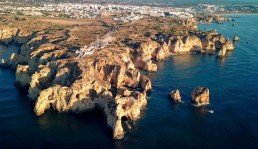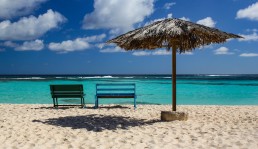I spent one full month in Porto to study Portuguese. This gave me the unique opportunity to get to know Porto really well. You can easily spend 3-4 days in Porto on a city trip and I certainly advise that. But, some parts of Porto really stood out to me and made me fall in love with Porto. This article is an itinerary as if you would only have one day in Porto to experience the absolute best things Porto has to offer. Let me tell you how to spend one perfect summer day in Porto.
Dawn – a madrugada
– Enjoy the sunrise, cross the Ponte Luís I bridge into the city, and watch people getting ready to start the day.
Check the sunrise times, wake up early and head straight to the Ponte Luís I bridge. Chances are you will be there all by yourself as most tourists stayed out late the night before. When the sun hits the historic city center, the golden light of the morning sun illuminates the colored buildings and rooftops perfectly.
Temperatures in the summer can reach 30-35 degrees Celsius so take advantage of the mild mornings to walk through the narrow and steep streets of the Ribeira district. You can enter at the bottom of the bridge or go up and enter behind the Sé cathedral. Make sure you find the little square on Rua da Pena Ventosa. It is one of the most idyllic and quiet places you will ever find in a big city center.
Daytime – o periódo diurno
– Walk the city and discover authentic shops and bakeries. Then, a well-deserved Porto wine tasting at one of the wine cellars in Gaia.
As always, the best way to experience a city is by walking through it, taking in the smells and sounds and peeking into all the open doors to see what life is like. The Porto streets are filled with hidden gems like authentic bookstores, bakeries, wineries, and restaurants. Of course, there are tons of cathedrals and museums. Also beautiful, but this article is about what makes Porto truly unique and that is walking the streets.
Start walking at Praça Infante D. Henrique (with its many different architecture styles) and then go to Largo de São Domingos. This is a more wealthy neighborhood, which means a lot of buildings are in a good state and you find some of Porto’s oldest stores here. From there, head towards to São Bento station through the shopping street, which is filled with incredible stores. Once in while, look up, as many buildings have unique exterior designs and quirky decorations on the second floor. Behind São Bento station, you can enter the Bolhão shopping district. There are some famous must-visits like Cafe Majestic (way overpriced so just peek in), Pérola Bolhão (the most authentic storefront ever) and Confeitaria do Bolhão (great for an authentic Porto lunch).
After lunch and all that walking, you will be thirsty. You are in luck! Porto is a name of a city, but it is even more famous because of its unique wine. The grapes come from the nearby Douro valley and taken to Porto to age in wooden barrels in large wine cellars (caves), which are strangely enough mostly above ground. During the English-French wars in the 17th and 18th century, the English couldn’t get French wines, so they started producing their own version in Portugal. That’s why most of the Port houses have English names and owners.
In Gaia, just across the river, there are around 40 (!) different Port houses in a relatively small area. Almost all offer wine tastings with a choice of 3 or 4 different types. You can upgrade to more premium variations if you like. If you are familiar with a certain brand, you might want to go to that house, but I suggest checking the reviews as the lesser known ones are a lot less busy and provide a more personal experience. Saúde!
Sunset – o pôr do sol
– Cityscape photo from the other side of the bridge. Stay for the blue hour when the city lights go on.
Time to head back to the Ponte Luís I bridge but stay on the Gaia side, which is the absolute best place to watch the sunset. You have several options, depending on where the sun goes down, but my favorite would be at the miradouro (lookout) of Mosteiro do Pilar. Here you have an unobstructed view of the bridge and the city with the sun setting behind it. Make sure you arrive 10 minutes in advance so you can find your perfect photo spot. Bring a sweater because it can get chilly fast.
Pro tip: most people leave right after the sun disappears below the horizon. Wait about 15-30 minutes more for the sky to get this full blue color and the lights of the city and the bridge to turn on. Perfect for photography, but also just to enjoy.
Nighttime – a noite
– Roam the Ribeira backstreets, visit the busier squares with street musicians, have some dinner and marvel at São Bento station.
After sunset, cross the bridge to the Porto side as it is worth to enter the Ribeira district again. You will notice that all the tourists disappeared and you get a unique glimpse of how people live in those streets. People cleaning, doing laundry, children playing, restaurants preparing food, the sounds of the seagulls and Portuguese radio and television. The color of the old streetlights makes it all feel extremely romantic.
For dinner, there are many options but it is often difficult to find a table. I would suggest getting a quick dinner somewhere and hit the busy squares to enjoy the street musicians and the beautifully lit historic buildings. Highlight and final stop is the São Bento station, with its famous tiles on the inside and beautiful clockworks.
Final thoughts
What makes Porto so unique
- Medieval streets with buildings over 500 years old
- People from all walks of life, from rags to riches, still live side by side in the city center. A good example is the laundry hanging outside of the houses situated right on the popular riverside, which would be prime (and priceless) real estate in any other city
- Numerous small traditional shops with some over 100 years old. Highlights are the old bookstores and famous bakeries
- The Ponte Luis I bridge serves as the main entrance to the city, crossing the Douro river, which is the economic driver for Porto. At first, because of the trade route and the Port wine cellars, but now also for tourism. The steep hills on both sides of the river make for one of the best cityscapes imaginable
Some interesting facts
- Gaia, where all the Port houses are, is actually a separate city. But when you visit as a tourist, it seems so close that it all feels part of Porto
- Combine the names Porto and Gaia and what do you get? Portugal!
- The official name is Porto and not Oporto. Oporto is the English version and in Portuguese, it would mean ‘the Porto’
- When buildings are renovated, the city of Porto requires that the facades of the buildings stay the same and are restored, maintaining the historic look and feel of the city. Gaia is different and that’s why you see more modern developments on their side of the river
Travel tips
- Although Porto is relatively small, it has hills and gets daunting on the feet. Sometimes, it is nice to be able to take a bus or a metro. You can buy an Andante card with unlimited rides within certain zones relatively cheap. Note that the fun little steep gondola next to the bridge (Funicular dos Guindas) is included. This will earn you your card back quickly and saves a LOT of climbing
- Porto is a safe city with hardly any crime. As always in a big city, petty theft can occur so watch your belongings
- Near Sao Bento station you will likely encounter people offering you drugs. Don’t get scared, they are all quite polite. If you say no (não in Portuguese), they often apologize for asking
- It can get crowded with tourists but they mainly steer towards the riverside and the larger shopping streets. Just go one block to the right or left and you have the streets all to yourself again and who knows what you might find

